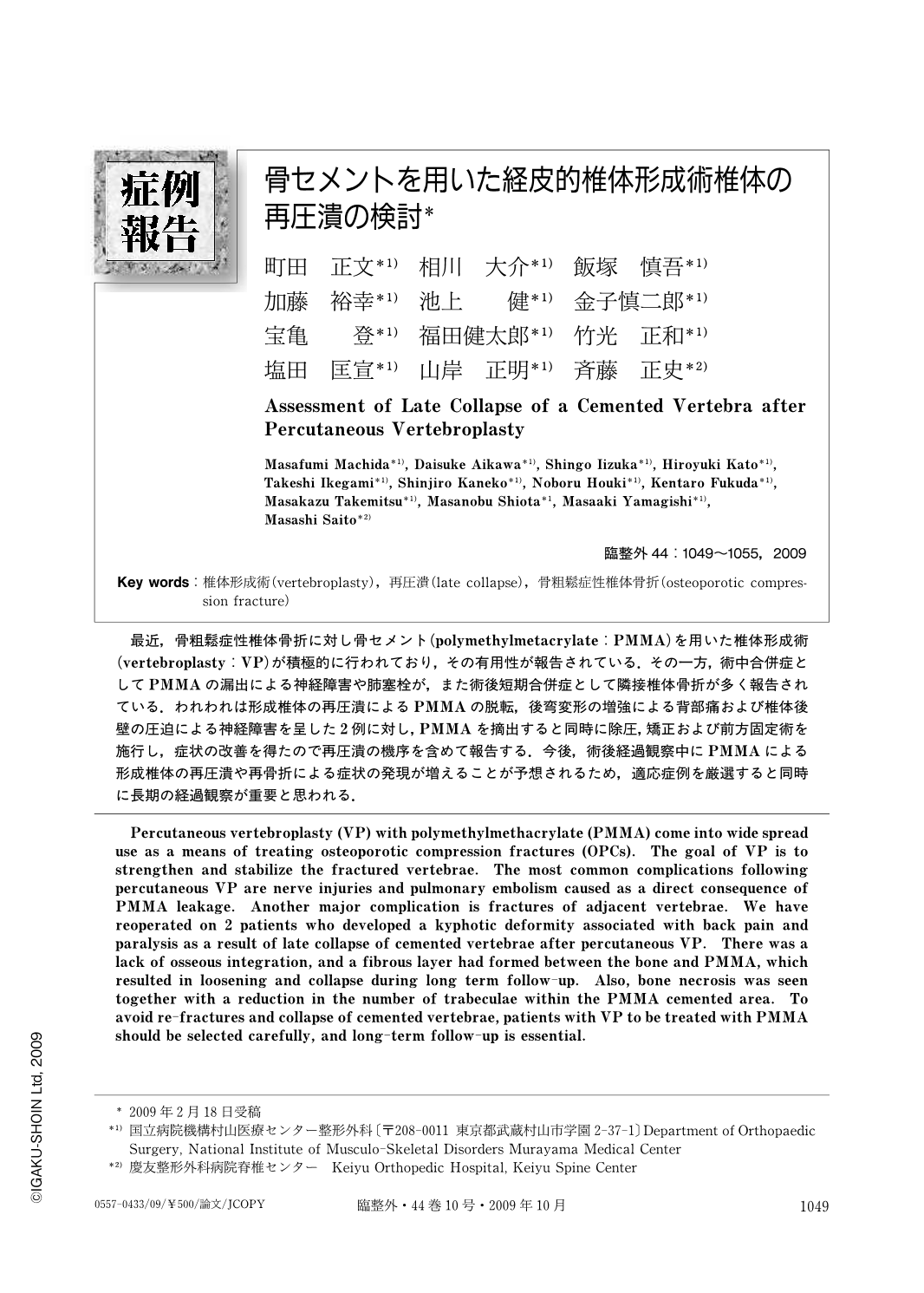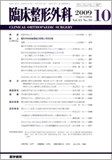Japanese
English
- 有料閲覧
- Abstract 文献概要
- 1ページ目 Look Inside
- 参考文献 Reference
最近,骨粗鬆症性椎体骨折に対し骨セメント(polymethylmetacrylate:PMMA)を用いた椎体形成術(vertebroplasty:VP)が積極的に行われており,その有用性が報告されている.その一方,術中合併症としてPMMAの漏出による神経障害や肺塞栓が,また術後短期合併症として隣接椎体骨折が多く報告されている.われわれは形成椎体の再圧潰によるPMMAの脱転,後弯変形の増強による背部痛および椎体後壁の圧迫による神経障害を呈した2例に対し,PMMAを摘出すると同時に除圧,矯正および前方固定術を施行し,症状の改善を得たので再圧潰の機序を含めて報告する.今後,術後経過観察中にPMMAによる形成椎体の再圧潰や再骨折による症状の発現が増えることが予想されるため,適応症例を厳選すると同時に長期の経過観察が重要と思われる.
Percutaneous vertebroplasty (VP) with polymethylmethacrylate (PMMA) come into wide spread use as a means of treating osteoporotic compression fractures (OPCs). The goal of VP is to strengthen and stabilize the fractured vertebrae. The most common complications following percutaneous VP are nerve injuries and pulmonary embolism caused as a direct consequence of PMMA leakage. Another major complication is fractures of adjacent vertebrae. We have reoperated on 2 patients who developed a kyphotic deformity associated with back pain and paralysis as a result of late collapse of cemented vertebrae after percutaneous VP. There was a lack of osseous integration, and a fibrous layer had formed between the bone and PMMA, which resulted in loosening and collapse during long term follow-up. Also, bone necrosis was seen together with a reduction in the number of trabeculae within the PMMA cemented area. To avoid re-fractures and collapse of cemented vertebrae, patients with VP to be treated with PMMA should be selected carefully, and long-term follow-up is essential.

Copyright © 2009, Igaku-Shoin Ltd. All rights reserved.


